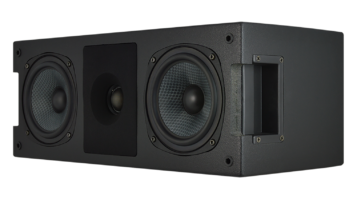The installation of in-ceiling and in-wall speakers in a retrofit project poses unique challenges not seen in a new construction installation. While speaker placement is performed in the same manner as a new-construction home, the installer must consider other additional issues in retrofit projects.
Step One: Checking for Obstructions
Finished walls block the ability to see what is contained within them, thus creating a challenge for speaker placement. Common obstructions include plumbing (metal pipes and ventilation pipes), electrical cabling (ouch, now thats going to hurt!), and hidden framing (fire blocking and wind bracing). The easiest, most efficient way to detect obstructions behind drywall is to use a stud finder to locate an open space between studs for in-wall speakers, and between joists for in-ceiling speakers. Sliding the stud finder horizontally across the ceiling or walls will locate studs and joists, while scanning vertically will locate horizontal framing members such as fire blocks.
Once a potential location is found, it must be checked for wires, because electrical cabling and pipes may not trigger the stud finders sensor, but would still obstruct the speaker installation. To check for wires, drill a pilot hole in the center of the proposed opening and insert a semi-rigid wire (i.e., a wire coat hanger) into the hole about six inches deep (15 cm). Bend the wire to 90-degree angle and sweep in a circular fashion. If an obstruction is found, the pilot hole may be filled with joint compound and a new placement determined.
Step Two: Preparing the Location
Next, use the cardboard insert found in the manufacturers packaging to trace the cutout hole for the speaker. The hole can be cut using a drywall saw, keeping the following in mind:
- Cut the hole in one piece. This makes replacement easy.Cut on the forward movement. Unlike other saws, drywall saws have teeth that face forward, allowing the dust to fall into the wall and minimizing the tearing of the drywall paper on the outside.
- Slow down at corners to avoid breaking the piece or cutting past the traced outline.
- Save the cut-out piece for future use, in case the speakers are removed. Note the exact location the cutout came from on the back of the piece.
- When finished cutting, remove all drywall scraps and clean the area.
Step Three: Connecting and Testing
Cabling needs to be tested prior to connecting the speakers. This is accomplished by the following:
- Place a tone generator at one end of the cable and use an inductive amplifier to listen at the other end.
- Prior to attaching the cabling to the speaker, use an ohmmeter to measure the resistance between the positive and negative terminals. Ensure that the resistance is in accordance with the manufactures specifications (8 ohms for most architectural speakers).
Because all speaker cables add resistance to the load driven by the amplifier, it is a good installation practice to ensure that the resistance of the cable is less than 10 percent of the resistance of the speaker. After connecting the speaker cable, measure the resistance between the positive and negative cable at the amplifier ends. Ensure that the resistance does not increase by more than 10 percent over the measurement at the speaker. If it does, consider a shorter cable run or a thicker gauge cable.
Step Four: Installing the Speaker
Once the speaker and cable pass these tests, the speaker can be installed. While each manufacturer has its own set of installation procedures, most speakers can be installed by the following method:
- Insert the speaker into the cutout, ensuring that the flange of the speaker adequately covers the hole. No holes should be present.
- Each speaker will have screws that can be tightened to secure the speaker. Many speakers have dog ears which extend beyond the speaker when the screws are tightened.
- A drill driver may be used to tighten the screws, however use one with a low torque setting to allow the speaker to be moved slightly within the cutout.
- Use a level to adjust the speaker.
- Use a hand screwdriver to tighten the screws until the speaker is firmly placed within the wall.
Todd B. Adams (todd@dipartner. com) is the CEO of DIpartner, an international firm dedicated to education for residential integrators.


